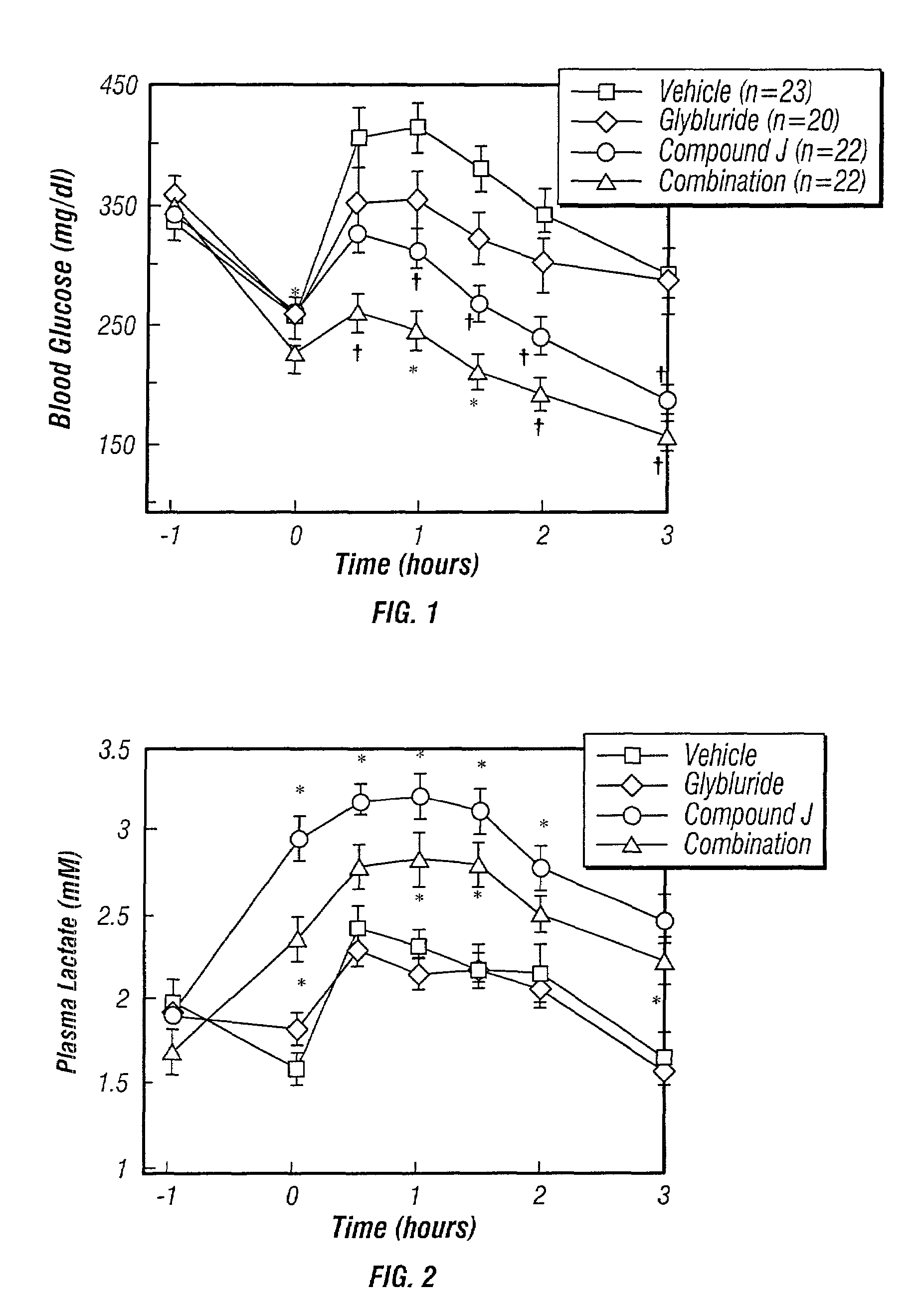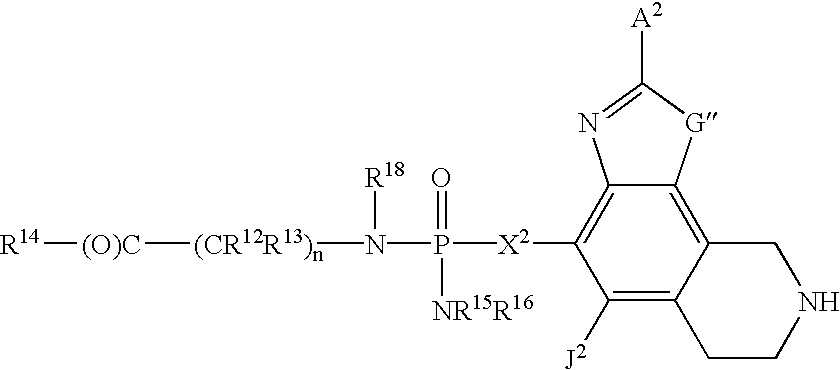Combination of FBPase inhibitors and antidiabetic agents useful for the treatment of diabetes
a technology which is applied in the field of conjugation of fbpase inhibitors and antidiabetic agents useful for the treatment of diabetes, can solve the problems of brittle diabetics, not well treated with these therapies, and both fasting hyperglycemia, and exaggerated postprandial glucose levels
- Summary
- Abstract
- Description
- Claims
- Application Information
AI Technical Summary
Benefits of technology
Problems solved by technology
Method used
Image
Examples
examples -
Examples-Synthetic Schemes
[1707]Compounds of formula VI are prepared according to the literature procedures with modifications and additions well understood by those skilled in the art. In general, these compounds are synthesized by the method of Srivastava, J. Med. Chem. (1976). Other methodology is described by Wood et al. J. Med. Chem. 28: 1198-1203 (1985); Sagi et al., J. Med. Chem. 35: 4549-4556 (1992); Paul, Jr. J. Med. Chem. 28: 1704-1716 (1985); Cohen et al., J. Am. Chem. Soc. 95: 4619-4624 (1973).
[1708]Compounds of formulae II-IV are prepared according to the procedures described in PCT publication numbers WO 98 / 39344, WO 98 / 39343, and WO 98 / 39342.
Section 1.
Synthesis of Compounds of Formula I
[1709]Synthesis of compounds encompassed by the present invention typically includes some or all of the following general steps: (1) preparation of a phosphonate prodrug; (2) deprotection of a phosphonate ester; (3) modification of a heterocycle; (4) coupling of a heterocycle with a pho...
example 1
Preparation of 5-diethylphosphono-2-furaldehyde (1)
[1806]Step A. A solution of 2-furaldehyde diethyl acetal (1 mmole) in THF (tetrahydrofuran) was treated with nBuLi (1 mmole) at −78° C. After 1 h, diethyl chlorophosphate (1.2 mmole) was added and the reaction was stirred for 40 min. Extraction and evaporation gave a brown oil.[1807]Step B. The resulting brown oil was treated with 80% acetic acid at 90° C. for 4 h. Extraction and chromatography gave compound 1 as a clear yellow oil. Alternatively this aldehyde can be prepared from furan as described below.[1808]Step C. A solution of furan (1 mmole) in diethyl ether was treated with TMEDA (N,N,N′N′-tetramethylethylenediamine) (1 mmole) and nBuLi (2 mmole) at −78° C. for 0.5 h. Diethyl chlorophosphate (1.2 mmole) was added to the reaction mixture and stirred for another hour. Extraction and distillation gave diethyl 2-furanphosphonate as a clear oil.[1809]Step D. A solution of diethyl 2-furanphosphonate (1 mmole) in THF was treated wi...
example 2
Preparation of 5-diethylphosphono-2-[(1-oxo)alkyl]furans and 6-diethylphosphono-2-[(1-oxo)alkyl]pyridines
[1813]Step A. A solution of furan (1.3 mmole) in toluene was treated with 4-methyl pentanoic acid (1 mmole), trifluoroacetic anhydride (1.2 mmole) and boron trifluoride etherate (0.1 mmole) at 56° C. for 3.5 h. The cooled reaction mixture was quenched with aqueous sodium bicarbonate (1.9 mmole), filtered through a celite pad. Extraction, evaporation and distillation gave 2-[(4-methyl-1-oxo)pentyl]furan as a brown oil (bp 65-77° C., 0.1 mm Hg).[1814]Step B. A solution of 2-[(4-methyl-1-oxo)pentyl]furan (1 mmole) in benzene was treated with ethylene glycol (2.1 mmole) and p-toluenesulfonic acid (0.05 mmole) at reflux for 60 h while removing water via a Dean-Stark trap. Triethyl orthoformate (0.6 mmole) was added and resulting mixture was heated at reflux for an additional hour. Extraction and evaporation gave 2-(2-furanyl)-2-[(3-methyl)butyl]-1,3-dioxolane as an orange liquid.[1815...
PUM
| Property | Measurement | Unit |
|---|---|---|
| Magnetic field | aaaaa | aaaaa |
| Magnetic field | aaaaa | aaaaa |
| Molar density | aaaaa | aaaaa |
Abstract
Description
Claims
Application Information
 Login to View More
Login to View More - R&D
- Intellectual Property
- Life Sciences
- Materials
- Tech Scout
- Unparalleled Data Quality
- Higher Quality Content
- 60% Fewer Hallucinations
Browse by: Latest US Patents, China's latest patents, Technical Efficacy Thesaurus, Application Domain, Technology Topic, Popular Technical Reports.
© 2025 PatSnap. All rights reserved.Legal|Privacy policy|Modern Slavery Act Transparency Statement|Sitemap|About US| Contact US: help@patsnap.com



